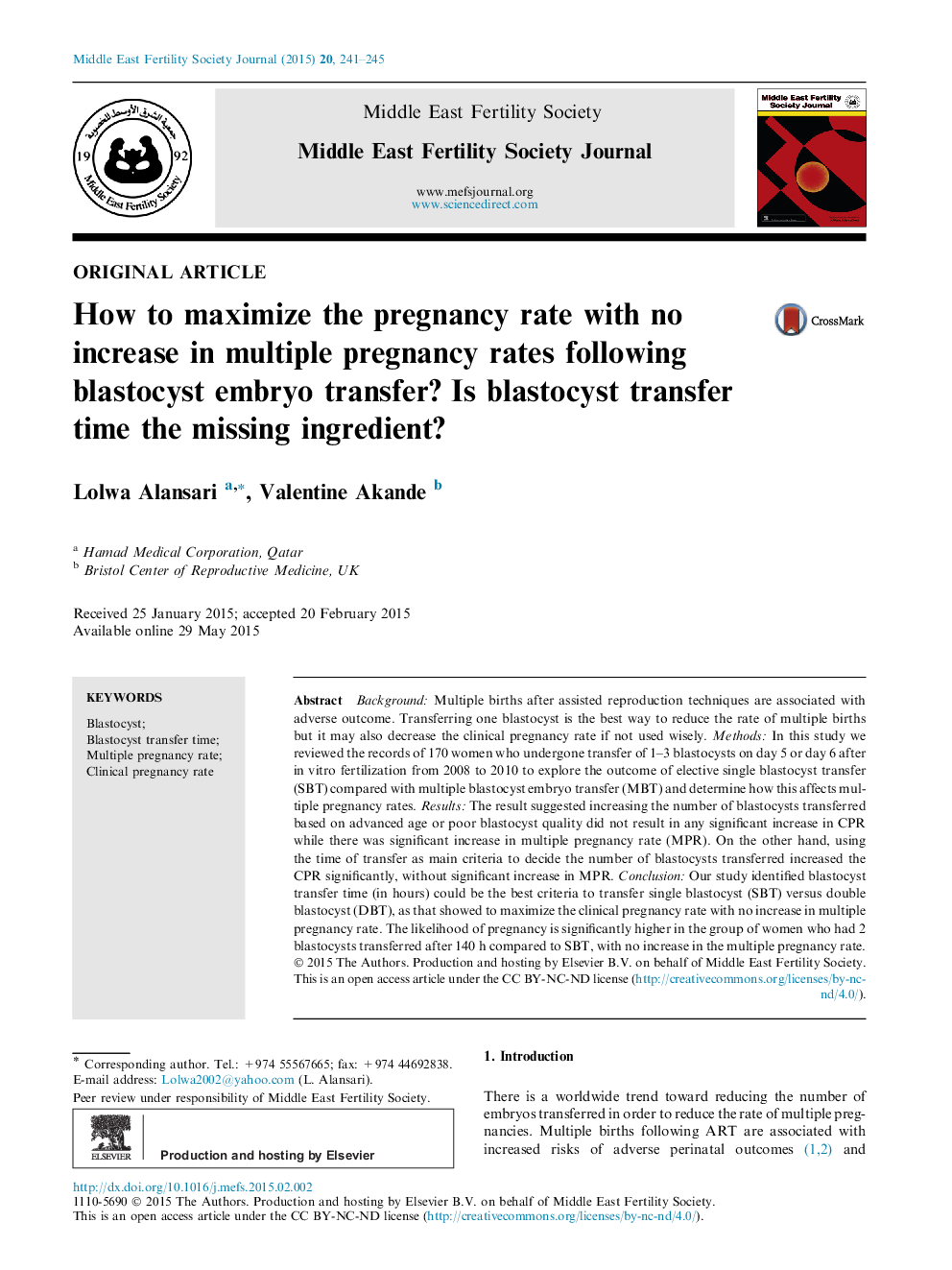| Article ID | Journal | Published Year | Pages | File Type |
|---|---|---|---|---|
| 3966082 | Middle East Fertility Society Journal | 2015 | 5 Pages |
BackgroundMultiple births after assisted reproduction techniques are associated with adverse outcome. Transferring one blastocyst is the best way to reduce the rate of multiple births but it may also decrease the clinical pregnancy rate if not used wisely.MethodsIn this study we reviewed the records of 170 women who undergone transfer of 1–3 blastocysts on day 5 or day 6 after in vitro fertilization from 2008 to 2010 to explore the outcome of elective single blastocyst transfer (SBT) compared with multiple blastocyst embryo transfer (MBT) and determine how this affects multiple pregnancy rates.ResultsThe result suggested increasing the number of blastocysts transferred based on advanced age or poor blastocyst quality did not result in any significant increase in CPR while there was significant increase in multiple pregnancy rate (MPR). On the other hand, using the time of transfer as main criteria to decide the number of blastocysts transferred increased the CPR significantly, without significant increase in MPR.ConclusionOur study identified blastocyst transfer time (in hours) could be the best criteria to transfer single blastocyst (SBT) versus double blastocyst (DBT), as that showed to maximize the clinical pregnancy rate with no increase in multiple pregnancy rate. The likelihood of pregnancy is significantly higher in the group of women who had 2 blastocysts transferred after 140 h compared to SBT, with no increase in the multiple pregnancy rate.
